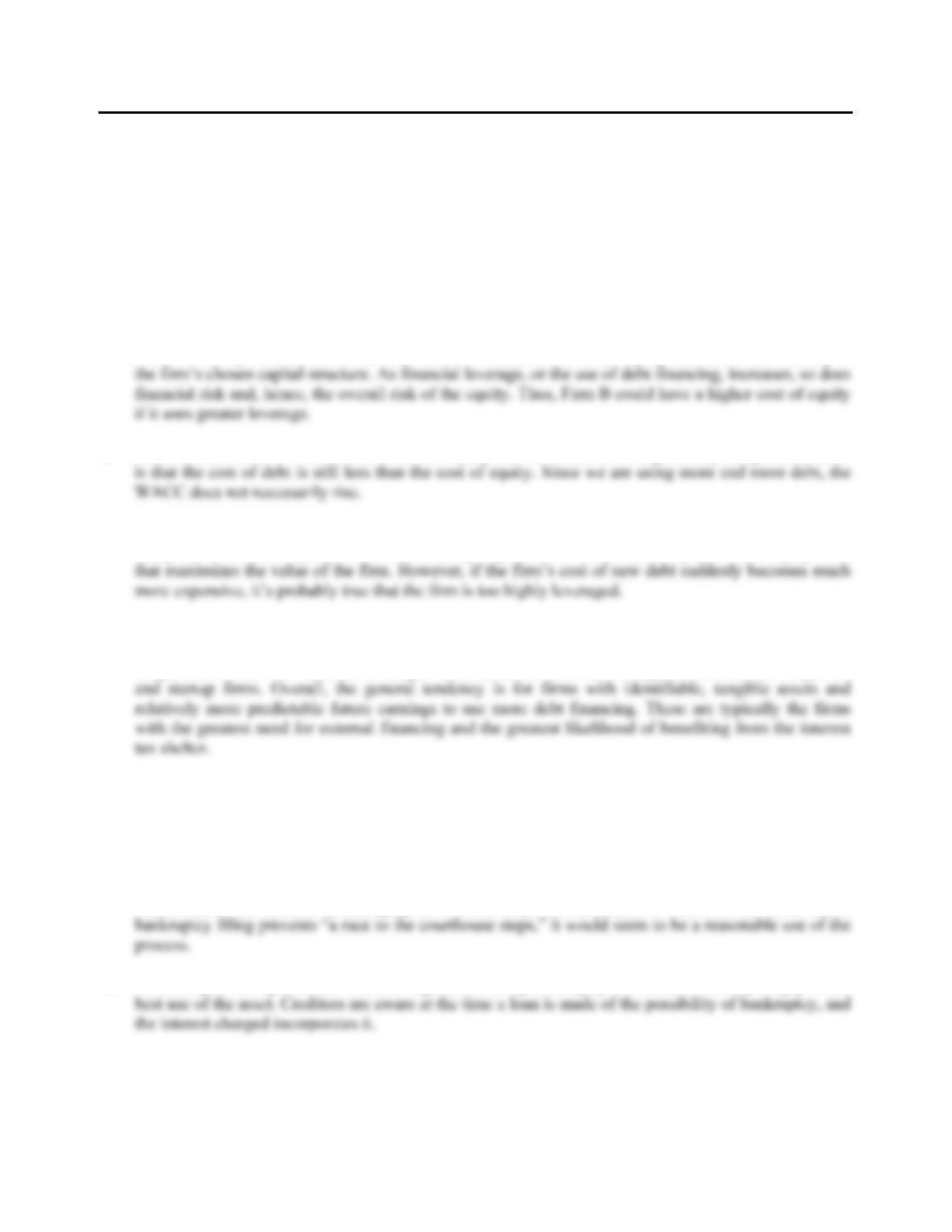CHAPTER 16 B-277
9. One side is that Continental was going to go bankrupt because its costs made it uncompetitive. The
bankruptcy filing enabled Continental to restructure and keep flying. The other side is that Continental
abused the bankruptcy code. Rather than renegotiate labor agreements, Continental simply abrogated
them to the detriment of its employees. In this, and the last several, questions, an important thing to
10. The basic goal is to minimize the value of non-marketed claims.
Solutions to Questions and Problems
NOTE: All end of chapter problems were solved using a spreadsheet. Many problems require multiple steps.
Due to space and readability constraints, when these intermediate steps are included in this solutions
manual, rounding may appear to have occurred. However, the final answer for each problem is found
without rounding during any step in the problem.
Basic
1. a. A table outlining the income statement for the three possible states of the economy is shown
below. The EPS is the net income divided by the 5,000 shares outstanding. The last row shows the
percentage change in EPS the company will experience in a recession or an expansion economy.
Recession Normal Expansion
EBIT $14,000 $28,000 $36,400
Interest 0 0 0
NI $14,000 $28,000 $36,400
EPS $ 2.80 $ 5.60 $ 7.28
%EPS –50 ––– +30
b. If the company undergoes the proposed recapitalization, it will repurchase:
Share price = Equity / Shares outstanding
Share price = $250,000/5,000
Share price = $50
Shares repurchased = Debt issued / Share price
Shares repurchased =$90,000/$50
Shares repurchased = 1,800



